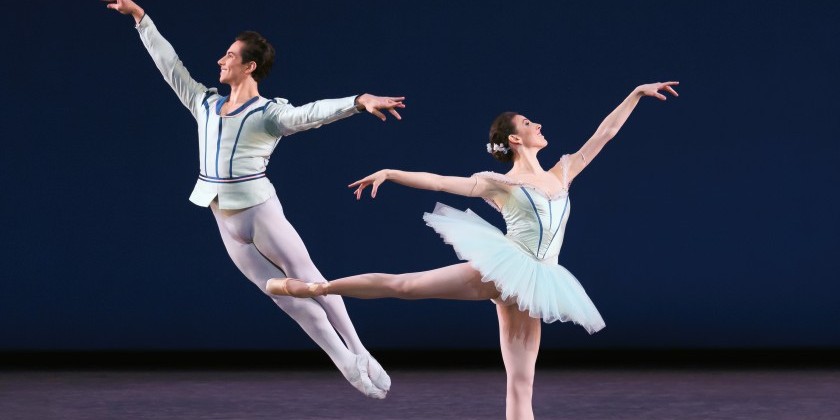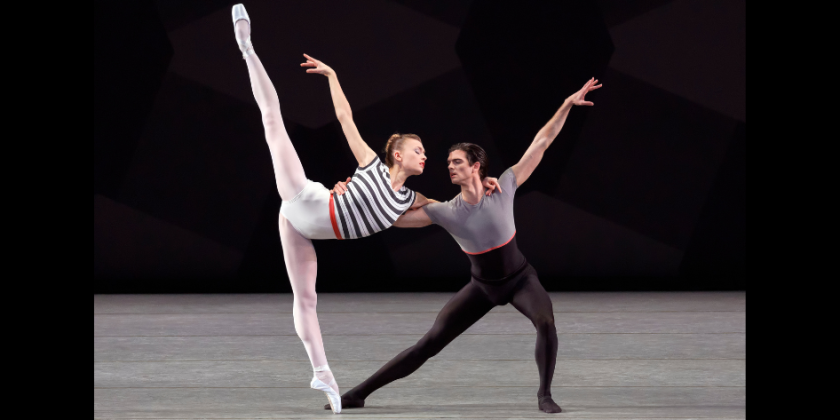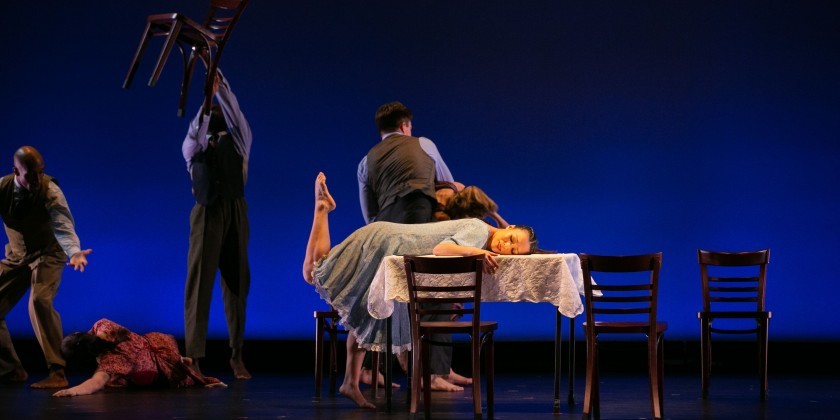IMPRESSIONS: New York City Ballet Premieres Justin Peck’s First Evening-Length Work, "Copland Dance Episodes," at Lincoln Center

Choreography: Justin Peck
Music: Aaron Copland
Scenery: Jeffrey Gibson
Scenery Supervision: Mark Stanley
Costumes: Ellen Warren
Costumes Supervision: Marc Happel
Lighting: Brandon Stirling Baker
Featured Dancers: Miriam Miller, Russell Janzen, Alexa Maxell, Jovani Furlan, Ashley Laracey, Unity Phelan, Emma Von Enck, KJ Takahashi, Sebastian Villarini-Velez, Cainan Weber, Naomi Corti, Meaghan Dutton-O’Hara, Isabella LaFreniere, Olivia MacKinnon, Gilbert Bolden III, Alec Knight, Lars Nelson, Andres Zuniga
David H. Koch Theater at Lincoln Center
January 26 - February 7 and May 12 - 25, 2023
Considering its referential title, Copland Dance Episodes, one expects the new evening-length ballet choreographed by Justin Peck, to music by Aaron Copland, to concern itself intricately with music-movement relationships, perhaps using dance to reveal new ways of hearing the music, as George Balanchine so supremely did in many of his ballets titled with references to names of composers and musical selections. Peck’s work is set on New York City Ballet, the renowned “home” of Balanchine’s game-changing choreography, and the company is touting Copland Dance Episodes as the first non-narrative, full-evening work created for the troupe since Balanchine’s Jewels (1967). Thus, though Peck, NYCB’s resident choreographer and artistic advisor, has created more than 45 ballets, choreographed the Steven Spielberg West Side Story film, and won a Tony Award for choreographing the 2018 revival of the Broadway musical Carousel, comparisons to Balanchine and his sophisticated musical sensibilities are unavoidable.
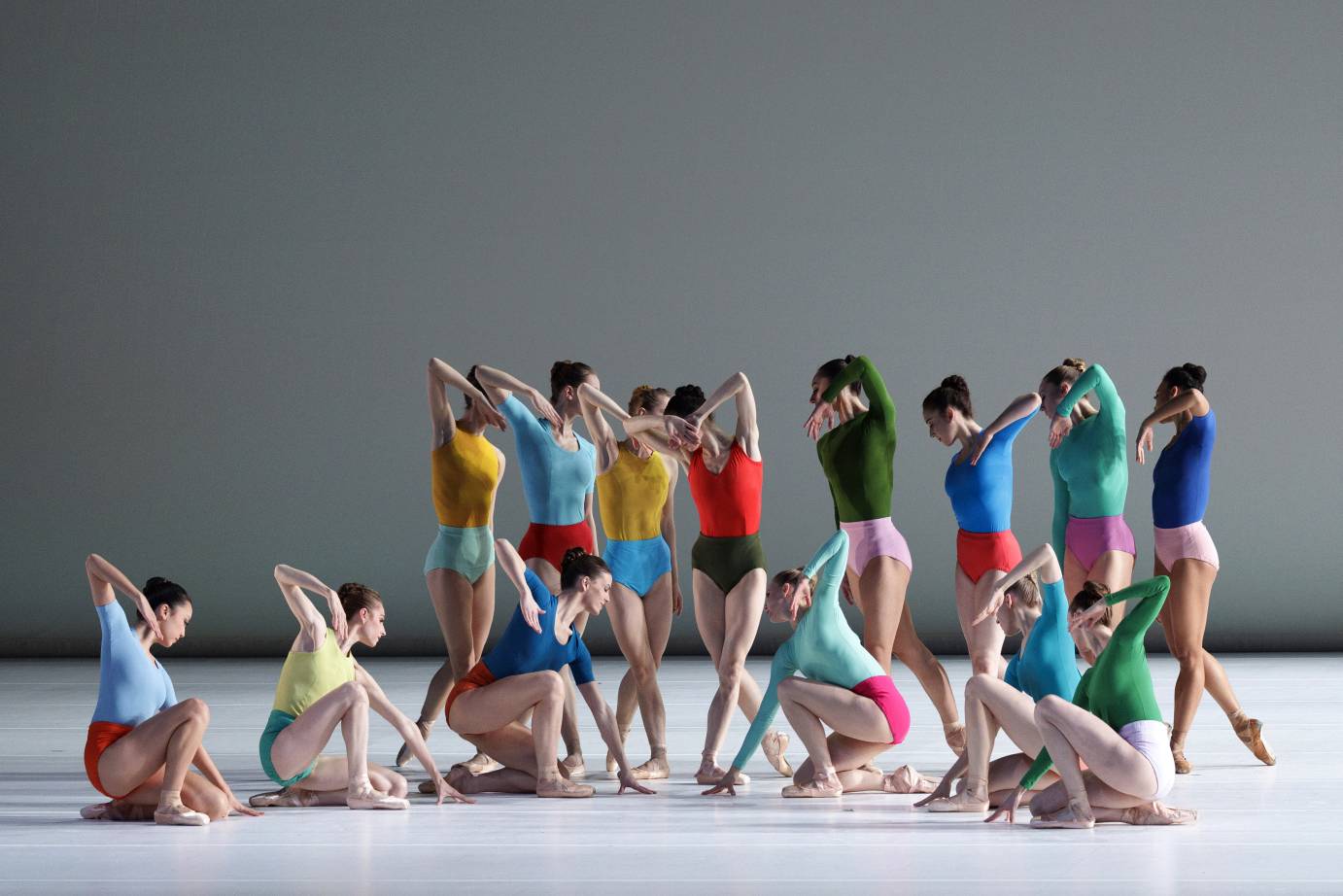
In that light, Peck’s new ballet (his first evening-length) isn’t terribly edifying, at least in terms of enriching how we listen to its musical score, an assemblage of four of Copland’s most familiar works: Fanfare for the Common Man, Four Dance Episodes from Rodeo, Appalachian Spring, and Billy the Kid. But like Peck’s earlier ballets — remarkable for the fresh exuberance they find in the athletic execution of centuries-old classical vocabulary — this one is upliftingly energizing, and leaves you feeling that all is right with the world. That is, if you experience satisfaction when sights and sounds, movement and music, scenery and choreography, or dancer and partner feel perfectly matched. Such match-making is what Peck serves up here, aesthetically and emotionally, in a pleasingly coherent, feel-good ballet.
And if you’re a fan of his rousing 2015 ballet Rodeo: Four Dance Episodes — that endearing portrayal of male competition and camaraderie, set to music Copland originally composed for Agnes de Mille’s 1942 Americana ballet Rodeo — you’re in luck. Essentially unchanged, that earlier ballet is recycled to form the first third or so of this piece, making it difficult to consider Peck’s latest endeavor a completely novel affair.

Yet the new ballet doesn’t immediately launch with Peck’s earlier Rodeo. Before the dancers line up in low lunges like sprinters on their marks, and dash full-speed across the stage — in what is certainly one of the most memorable ballet openings of all time — we see a vibrantly-painted drop curtain by Choctaw-Cherokee artist Jeffrey Gibson. As our ears are stunned by the stirring timpani and gongs of the opening bars of Fanfare for the Common Man, our eyes are astonished by the curtain’s bright colors and geometric patterns. As you stare at it, I advise noting the rows of diagonal lines slicing the tiny rectangles overlaid by giant concentric circles, and you’ll recognize them later referenced in Peck’s choreographic designs and tableaux — one of the “matches” that help make this long, episodic ballet cohere.
Others include costume designer Ellen Warren’s repetition of the curtain’s colors in the boldly contrasting tops and bottoms of the dancers’ leotards, and the vast, luminous, spaciousness (created by Brandon Stirling Baker’s lighting and Mark Stanley’s scenic supervision) which mirrors the optimism and expansiveness of Copland’s music and its affiliation with the promise and geography of America.
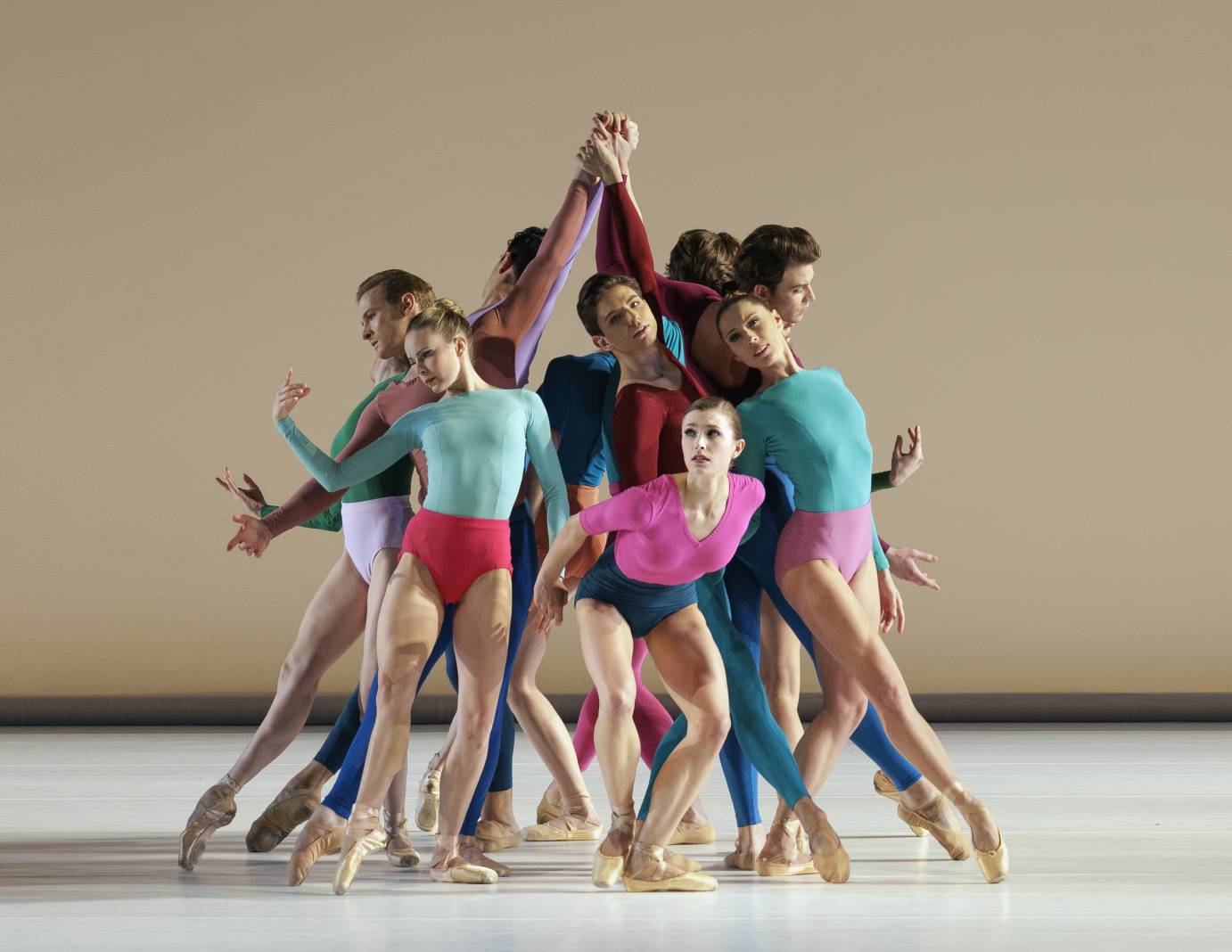
The 70-minute work comprises 22 short episodes, distinguished largely by mood, not choreographic vocabulary. Peck is expert at devising phrases of contemporary-feeling, neo-classical steps that are not notably inventive but keenly reflect the dramatic essence of the music. He doesn’t lead us to new discoveries within the Copland scores, but rather underlines what we already appreciate about them. The wonderful bounciness of the Rodeo music is magnified by the jumping antics of the male ensemble, its jarring pauses by humorous freezes, its excitement by overhead lifts and throws, and its romance by the ravishing partnership of Miriam Miller and Russell Janzen. Both lithe, stately, and elegantly contemplative in their movements, their pairing is yet another example of the work’s coordinating nature.
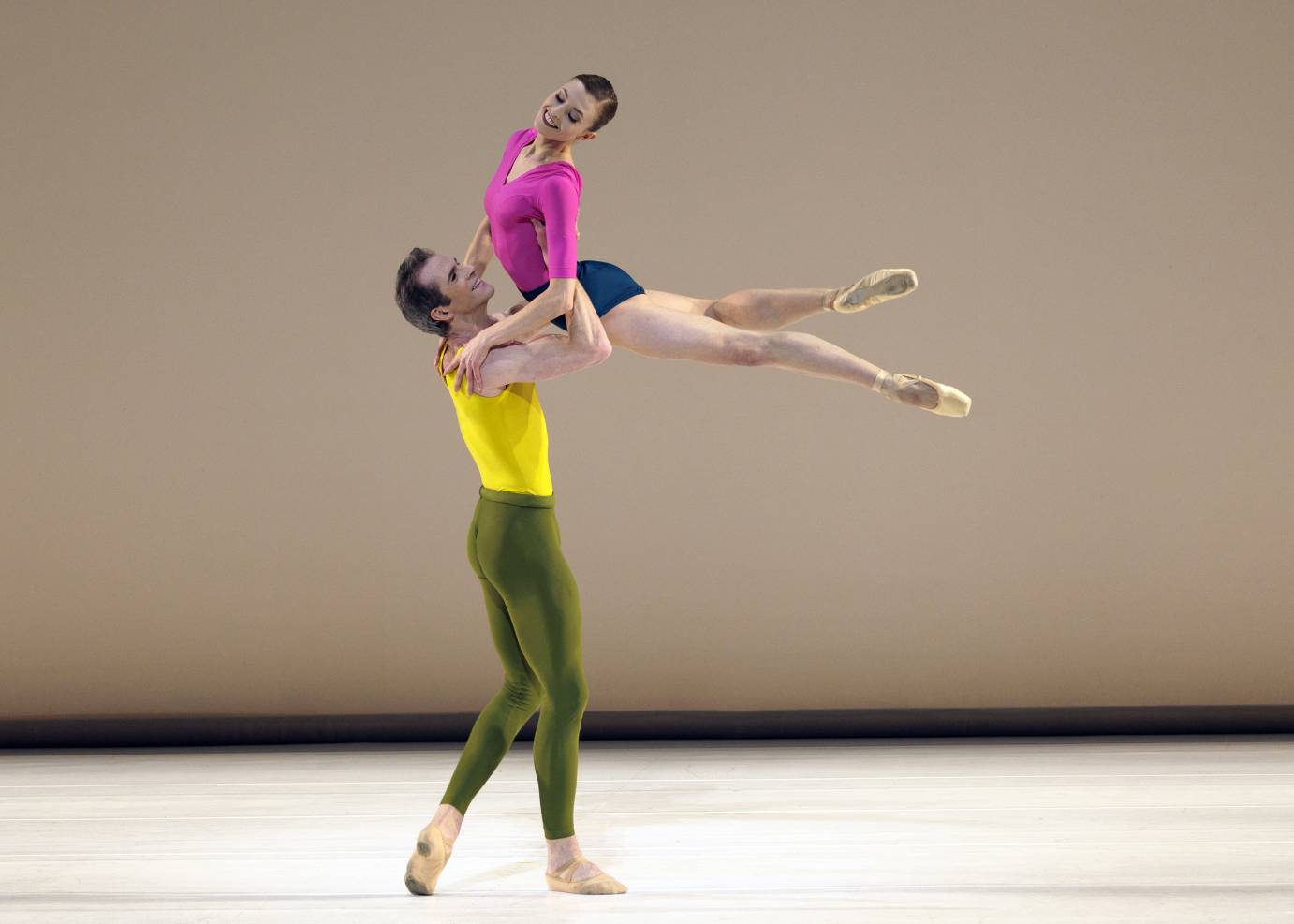
As the ballet evolves, it alternates exhilarating large-ensemble episodes with lyrical pas de deux or well-crafted trios and quartets, sometimes featuring a soloist. Early on, a secondary couple (Alexa Maxwell and Jovani Furlan) emerge, along with a hint of a storyline. In three expressive duets, we see them on a conversational “first date,” talking to each other through intimate gestures of their legs and feet, on a second outing moving more slowly with sweeping, weighty movements, as if engaging in serious dialogue, and by their third meeting exhibiting the urgency of heated desire.
Miller and Janzen, on the other hand, drift romantically in and out of the space throughout the work, serving as choreographic “connective tissue” between sections, until the ballet’s climactic episode, in which they try repeatedly to entwine their bodies, with great awkwardness. Then, in a brilliantly-staged sequence, Janzen moves downstage and, lit only in silhouette, turns his back to us to watch Miller dancing upstage. Her movements seem to be explaining why she’s leaving, and he listens stoically. They then switch places: he “talks” and she “listens.” They switch again, and again. Their long good-bye grows heart-breaking. They try once more to clasp hands as their bodies pull away from each other. Suddenly, a boom from the percussion section breaks their grasp, instantly severing their relationship. But the aspirational spirit of the music prevails. As the stage fills with activity, we see Miller and Janzen each dancing animatedly, individually, making a new start, among new people. After all, we’re still in Copland territory.








